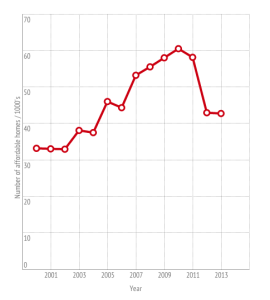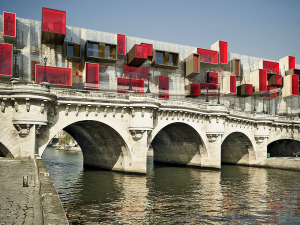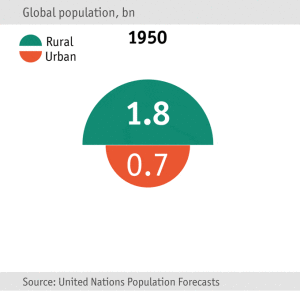Bonushoofdstuk: Generaties en het omgaan met concrete utopieën – Een overzicht
 Dit Bonushoofdstuk maakt Generaties van Geluksvogels en Pechvogels (3e, herziene druk 2014) tot een Living book. Deel I.
Dit Bonushoofdstuk maakt Generaties van Geluksvogels en Pechvogels (3e, herziene druk 2014) tot een Living book. Deel I.
Zie: Henk A. Becker – Generaties van Geluksvogels en Pechvogels: Strategieën voor assertief opgroeien, actief ouder worden en intergenerationele solidariteit tot 2030 (Met een Woord vooraf van Paul Schnabel). Amsterdam: Rozenberg Publishers. Ebook en paperback. Ook in het Engels: Generations of Lucky Devils and Unlucky Dogs. Ebook en paperback.
Becker©december 2014
Inleiding
In 1516 verscheen Utopia van Thomas More. Met als ondertitel: ‘Een waarlijk gulden boekske, niet minder heilzaam als geestig over de beste staatsinrichting en het nieuwe eiland Utopia’. Het gedachtegoed van More is nog steeds springlevend. Telkens verschijnen er weer nieuwe utopieën. Hiertoe behoren ook de concrete utopieën, dat wil zeggen boeken en dergelijke over ‘realiseerbare’ toekomstontwerpen.
Dit bonushoofdstuk is geschreven in deze traditie van de ‘concrete utopieën’. Een vroeg voorbeeld van deze traditie vormt Silent Spring van Rachel Carson uit 1962. Eerst lezen wij over de oprukkende bedreigingen van de natuur door spuiten met pesticiden. In het slothoofdstuk The Other Road staat een stevig onderbouwd pleidooi voor natuurvriendelijke bestrijding van onkruid en ongedierte.
Wie een concrete utopie leest moet rekening houden met het patroon van generaties waarin de betrokken realiseerbare toekomstontwerpen spelen. Denk aan het referendum over de periode van tien jaar volgend op 2014. Dit referendum is in 2014 gehouden in het kader van de campagne Namens Nederland. Een recent boek over het patroon in de Verenigde Staten vormt: The Clash of Generations: Saving Ourselves, Our Kids, and Our Economy’, in 2012 gepubliceerd door Laurence J. Kotlikoff en Scott Burns.
In dit bonushoofdstuk staan drie vragen centraal. In de eerste plaats: welk instrumentarium is vereist om in Nederland voor de komende tien jaar de wensen van de bevolking te verzamelen en deze inventarisatie tot basis te nemen voor een concrete utopie? In de tweede plaats: welke doelgroepen hebben behoefte aan dit instrumentarium? Ten derde: hoe kan het patroon van generaties als achtergrond dienen voor het referendum en de erop volgende concrete utopie? Dit bonushoofdstuk is een onderdeel van het boek Generaties van Geluksvogels en Pechvogels.
1. Het instrumentarium
Wie de in het verleden verschenen concrete utopieën bestudeert, treft veelvuldig inhoudelijke en methodische aanbevelingen aan. Ter ondersteuning van het omgaan met concrete utopieën is een MINIGIDS opgesteld.
Het aangeboden instrumentarium bevat verder een SELECTIE uit recent verschenen ‘concrete utopieën’. Welke voorbeelden kunnen wij in ons land raadplegen? Wat kunnen wij van hen leren? (Webpamflet 1).
Ook het PATROON VAN GENERATIES vormt een instrument. In de komende tien jaar zullen heel wat generatieproblemen optreden. Dit vereist onder meer het inzetten van ‘generational accountancy’. Voorbeelden komen wij vooral tegen in rapporten van het Centraal Planbureau. Ook Generaties van Geluksvogels en Pechvogels presenteert instrumenten (Webpamflet 2). Aanvullend is de generatiedriehoek vermeld (Webpamflet 5).
Wie met de beschikbare empirische gegevens en de realiseerbare toekomstontwerpen gaat werken zal SPELMODELLEN moeten inzetten. Hierbij kan het ‘Gouden Eeuw Spel’ goede diensten bewijzen (Webpamflet 3). Een selectie uit beschikbare spelmodellen bouwt voort op dit voorbeeld (Webpamflet 4).
De campagne van Namens Nederland zal talloze toekomstontwerpen naar voren brengen. Een keuze uit dit aanbod zal nadere uitwerking uitlokken. Dit maakt toepassing van EVALUATIES VOORAF wenselijk. Voor dit instrument staat de literatuur over ‘social impact assessment’ ter beschikking (Webpamflet 6). Zie met name Henk A. Becker & Frank Vanclay (eds). The International Handbook of Social Impact Assessment: Conceptual and Methodological Advances). In september 2014 verschenen als e-book bij Edward Elgar. Read more
Nick Mathiason – A Great British Housing Crisis

The fall in affordable housing In 2010, 60,480 affordable homes were built. Government figures suggest just 42,710 affordable units will be built in the 12 months to March this year.
tbij.creatavist.com. December 2014. Jean Uzoma, a redoubtable 67-year-old community activist, lives in one of Europe’s biggest housing development zones close to the Thames in south London.
From Jean’s fifth floor balcony, imposing glass towers and cranes edge towards her estate both east towards Waterloo and Southwark and west to Vauxhall and Battersea.
As house prices and rents spiral, you’d imagine a huge housing project presents the perfect opportunity to address Britain’s affordable housing crisis.
But Jean sounds almost affronted when asked whether the thousands of newly built flats in her community will provide homes for her daughter’s family who were priced out of the area years ago.
“Don’t be stupid!” she laughs. “Nobody’s going to live there who comes from here.”
Less than quarter of a mile from Jean’s flat and running parallel to the River Thames is a 195 hectare muddle of arterial roads, elevated rail lines, offices, distribution businesses, data centres and council estates.
Read more: https://tbij.creatavist.com/viability
Margaret Rhodes – Voluntary Ghettos: A Radical Idea For Reclaiming Urban Space

French architect Stéphane Malka lives in Paris, where climbing real estate prices are pushing people further outside the city and leading to social inequality. STÉPHANE MALKA ARCHITECTUR
wired.com. December 2014. What do Burning Man, Israeli kibbutzim, and neighborhood block parties have in common? “They are fascinating examples of how people can appropriate a territory for themselves and reclaim it,” says architect Stéphane Malka, in response to his own question. “It’s the idealistic essence of the society.”
Malka lives in Paris, a city that, like New York and San Francisco, faces growing inequality created by climbing real estate prices. So as Malka sees it, Parisians need a way to “reclaim” the city. His idea is a modular micro-city consisting of rooms that attach to scaffolding built around existing infrastructure, like barnacles clinging to a ship.He calls it the P9 Mobile-Ghetto, and has imagined them here hanging off the side of the Pont Neuf bridge in Paris.
Read more: http://www.wired.com/voluntary-ghettos
David Thorpe – How To Save Millions On Air Conditioning By Designing Passively Cooled Buildings
sustainablecitiescollective.com. December 2014. Air conditioning is by far the greatest consumer of electricity in buildings in hot countries, but it needn’t be so.
Back in the warm days of August (at least in my part of the world) I wrote about how buildings in sunbelt countries could save millions by using active solar cooling. But architects designing buildings for regions that otherwise would require air conditioning can also use passive solar techniques to keep them cool, and in many cases successfully eliminate the need for expensive air conditioning.
 A design for a mosque using passive solar and evaporative cooling.
A design for a mosque using passive solar and evaporative cooling.
Passive solar cooling operates in two stages:
- Do your best to prevent the sun from reaching the building or gaining the interior of the building during the periods when it is in danger of overheating.
- Then employ passive techniques to remove unwanted hot air.
Different techniques are available depending upon the climate, i.e. whether it is dry or humid.
Read more: http://sustainablecitiescollective.com/david-thorpe
Adele Peters – Can 3-D Printed Homes Help Solve Homelessness?
The best way of solving homelessness, many advocates argue, is just to give people homes. Though it sounds simplistic—and expensive — a “housing first” policy in places like Utah and Boston actually saves the government money. Now a U.K. company hopes to help make the process cheaper by building homes with a 3-D printer.
“3-D print homes speed up the construction process,” says Fabian Jean-Baptiste, owner of CNSTRCTN, a London-based development company, now launching a new project to start printing homes for charity. “It’s proven to be able to build a house per day.”
Read more: http://www.fastcoexist.com/can-3-d-printed-homes
The Economist – A Planet Of Suburbs
 Thirty kilometres south of central Chennai, just out of earshot of the honking, hand-painted lorries roaring up Old Mahabalipuram Road, you seem to have reached rural India. The earth road buckles and heaves. Farmers dressed in Madras-checked dhotis rest outside huts roofed with palm leaves. Goats wander about. Then you turn a corner, go through a gate, and arrive in California.
Thirty kilometres south of central Chennai, just out of earshot of the honking, hand-painted lorries roaring up Old Mahabalipuram Road, you seem to have reached rural India. The earth road buckles and heaves. Farmers dressed in Madras-checked dhotis rest outside huts roofed with palm leaves. Goats wander about. Then you turn a corner, go through a gate, and arrive in California.
Lakewood Enclave is a new development of 28 large two-storey houses, wedged tightly together. The houses are advertised as “Balinese-style”, although in truth they are hard to tell apart from any number of suburban homes around the world. Outside, the houses are painted a pale pinkish-brown; inside, the walls are white, the floors are stone and the design is open-plan. They each have three bedrooms (middle-class Tamil families are small these days) and a covered driveway to protect a car from the melting sun. Just one detail makes them distinctively Indian: a cupboard near the door for Hindu gods.
A quarter of a century ago your correspondent taught in a school not far from these houses. It was a rural area; bonnet macaques would sometimes invade his shower. Now farmers are selling their small parcels of land to housebuilders for sums beyond previous imagining. Commuters are rushing in so that, every morning, they can rush out again. Chengalpattu, the district where Lakewood lies (see map on next page—where the new development is also pictured), now contains more than half a million people. Lakewood looks likely to be the rule, not the exception. “The force of human nature means it will happen,” says Balaji Narasimhan of SSPDL, its developer. “You can’t stop it.”
Read more: http://www.economist.com/suburbs



